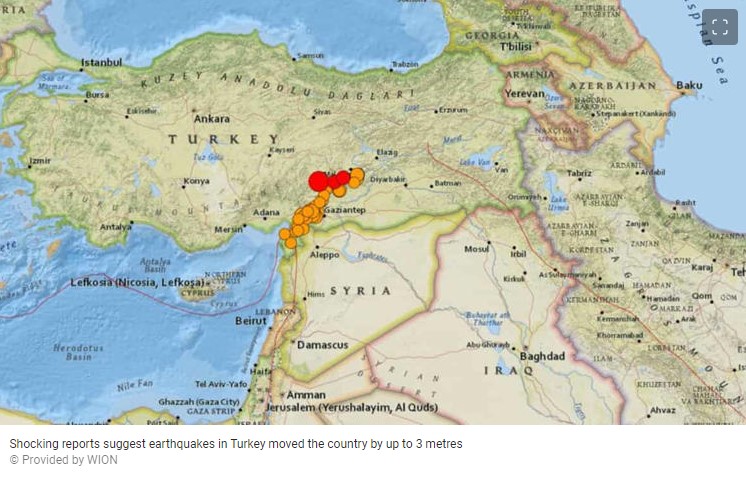Shocking reports suggest earthquakes in Turkey moved the country by up to 3 metres

Powerful earthquakes hit Turkey and parts of Syria on Monday, causing massive destruction of life and property. More than 6,000 people died in the quake, but the death toll is expected to rise.
Meanwhile, a shocking report has emerged that notes that the earthquakes may have shifted the tectonic plate it sits on by up to three m
Turkey and Syria were jolted by two major earthquakes of magnitude 7.8 and 7.5. Several aftershocks hampered the rescue work.
ALSO READ | ‘Miracle amid devastation’: Baby born under rubble; rescued after Syria, Turkey earthquake. Watch!
The epicentre of Monday’s earthquake was at a depth of about 17.9 kilometres near the Turkish city of Gaziantep. The city is home to around two million people.
Later experts revealed that the earthquake was caused by the Arabian tectonic plate moving northward. Turkey is prone to earthquakes as it sits above major faultlines, bordering the Anatolian Plate, Arabian Plate and Eurasian Plate.
According to the meteorologists, about a 225 km stretch of the fault between the Anatolian Plate and the Arabian Plate has been damaged.
Dr Carlo Doglioni, who is an Italian seismologist told the news site Italy 24, that after the earthquake, Turkey could even have slipped by up to “five to six metres compared to Syria”.
As quoted by media reports, Dr Doglioni, who is a president of the Italian National Institute of Geophysics and Volcanology, said that “what we call the Arabian plate moved about three meters along the northeast-southwest direction in relation to the Anatolian plate; we are talking about a structure in the border area between this world, that of the Arabian plate and that of the Anatolian plate”.
Although, he did mention that more information is needed to produce a concrete result the analysis is based on preliminary data.
WATCH | Rescue efforts underway in Turkiye after deadly earthquake
×
Meanwhile, a Daily Mail report quoted Dr Bob Holdsworth, a professor of structural geology at Durham University, as saying that the plate shift was “perfectly reasonable” considering the magnitude of the earthquake.
“There is a fairly predictable, widely documented relationship between the magnitude of an earthquake and the typical offset that occurs,” Dr Holdsworth told Daily Mail.
“As a rule of thumb, a magnitude 6.5 to 6.9 event is associated with an offset of around one metre – whilst the largest known earthquakes can involve offsets of 10 to 15 metres,” he added.
“The faults that slipped yesterday in Turkey are strike-slip faults that involve mainly horizontal displacements, and so the overall offsets in the region of 3 to 6 metres proposed here are perfectly reasonable,” he further said.







